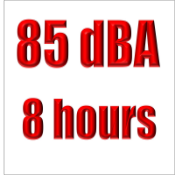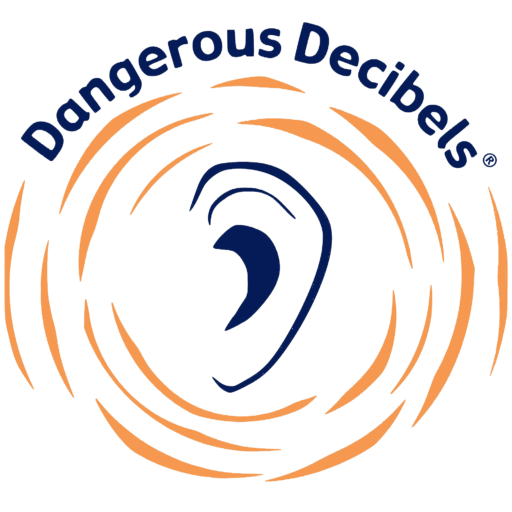
The Flashcard Activity
- Review “What is a Decibel” from the introduction

- Show the 85 dBA for 8 hours sign and explain the following:



85 dBA is the sound of the average factory or a busy street corner in the city (or find some other examples in your community).
Continue to explain that the softest sound that a healthy human ear can hear is around 0 dBA. The higher the sound volume, the less time you can listen to it safely.
- Bring up 3-4 student volunteers to the front of the class and hand them each 3 flashcards with the pictures facing out towards their classmates. Mix up the safe and dangerous cards.


- For each flashcard ask the same two questions: Is the sound safe or dangerous? What can they do to protect their hearing? You can use the caution signs (Turn It Down, Walk Away and Protect Your Ears) to reinforce the answers.
Advanced Techniques:
The script provides examples of the extended conversations you can have with the students for a subset of flashcards. This can be attempted when you have gained good experience managing the program delivery time and student interactions.
Alternative Seating
In some classrooms, the students are seated in a “U” pattern and can see each other easily. In this case, the educator can hand out flashcards to 9-10 individual students while they are seated. Then when called upon, the student stands, presents the picture side of their postcard to their classmates and the activity continues in the same manner as if their were student volunteers at the front of the class.
You can make your own flashcards to match sounds that are common in your local environment. This can be done by finding a graphic/photo of the sound source and looking up the sound levels associated with that sound. One source that is especially useful is the Noise Navigator which can be found in the Resources module. You are welcome to contact the Dangerous Decibels Online Training instructors for help with this as well. Most importantly, always use high quality evidence-based resources for determining the sound levels as they can easily be measured incorrectly by others. Once you know the sound level, just insert 2 more slides in the Master Flashcard PowerPoint file and print front to back to create a new flashcard. You can “duplicate” a previous flashcard to facilitate keeping the font and picture sizing consistent. Then just save the new file. Please share any ideas about new flashcards back to us, so we can share them with others too!
